熊野古道とは?おすすめのルートや見どころスポットを解説|アクセス方法や服装なども
掲載日:2023.04.27
「熊野古道」を知っていますか?2004年にユネスコ世界遺産にも登録されたこの道は、古来より先人たちが歩んだ「巡礼の道」です。この記事では、そんな熊野古道の歴史や文化などをご紹介したあと、おすすめのコースや周辺の見どころスポット、アクセス方法や適した服装までご紹介しますので、熊野古道散策を検討中の方は、ぜひ参考にしてくださいね!
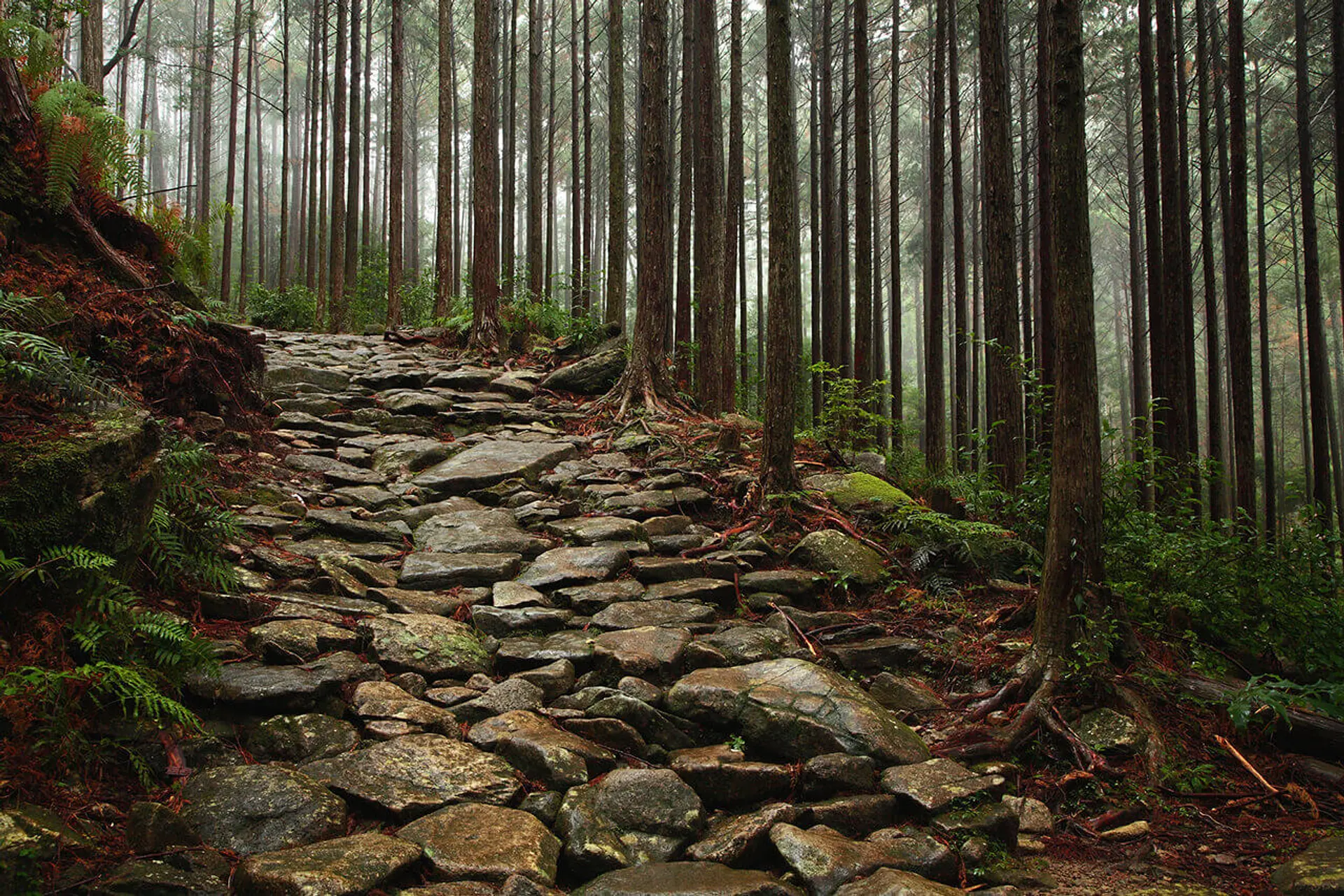
▼目次
熊野古道・熊野三山とは
古来より先人たちが歩んだ巡礼の路「熊野古道」は、「熊野三山」と呼ばれる3つの大社へと繋がる参詣道のことを指します。「熊野三山」とは「熊野本宮大社」「熊野速玉大社」「熊野那智大社」この3つの神社を指していて、日本全国に数多存在する熊野神社の総本社です。まずはこの「熊野三山」について、それぞれご紹介します。
①熊野本宮大社
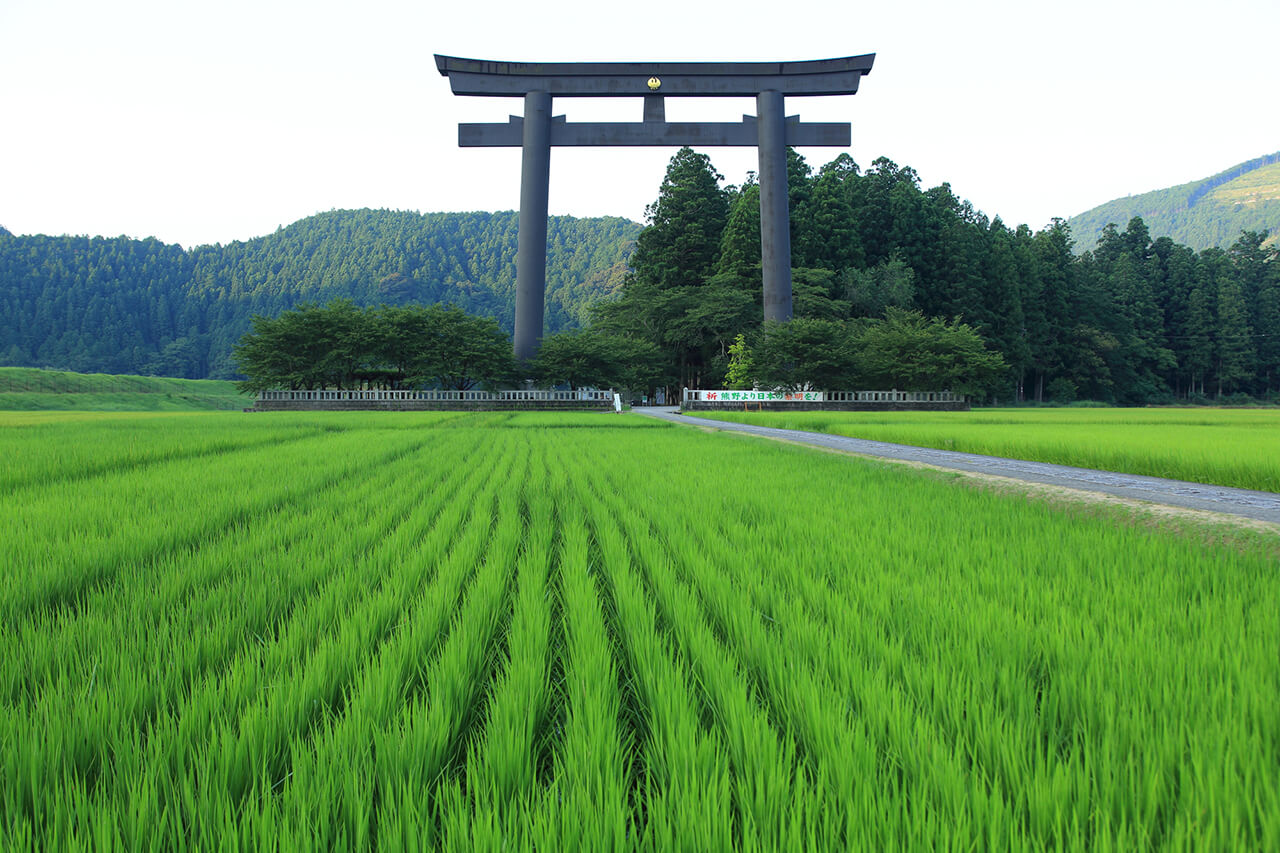
和歌山県田辺市にある高さ34m、日本一の大鳥居を構えるこの大社が「熊野本宮大社」です。社殿は紀元前33年に創建されたとされていて、素戔嗚尊(スサノオノミコト)が主祭神として祀られています。
②熊野速玉大社
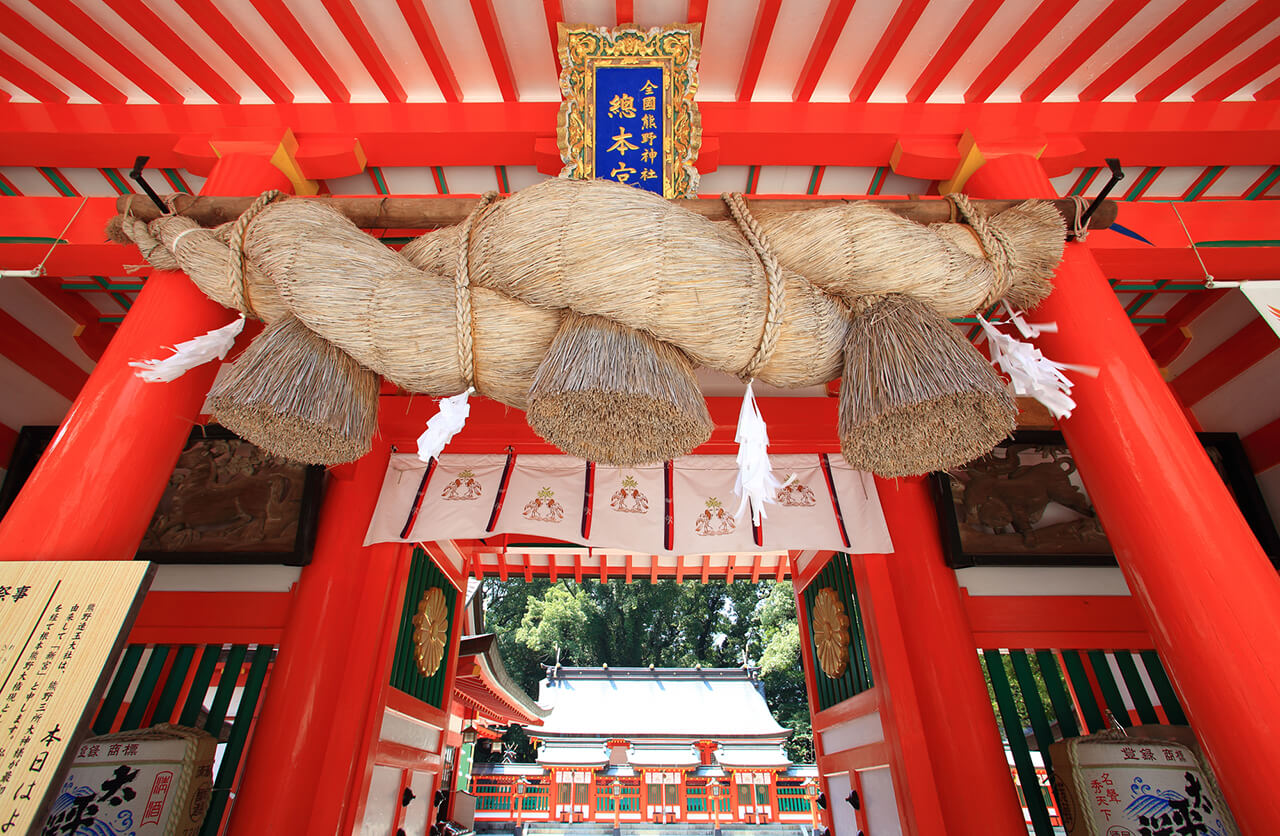
和歌山県新宮市にある「熊野速玉大社」では、熊野速玉大神と熊野夫須美大神の夫婦神が主祭神として祀られています。国の天然記念物である巨大なナギの木が鎮座する大社です。
③熊野那智神社
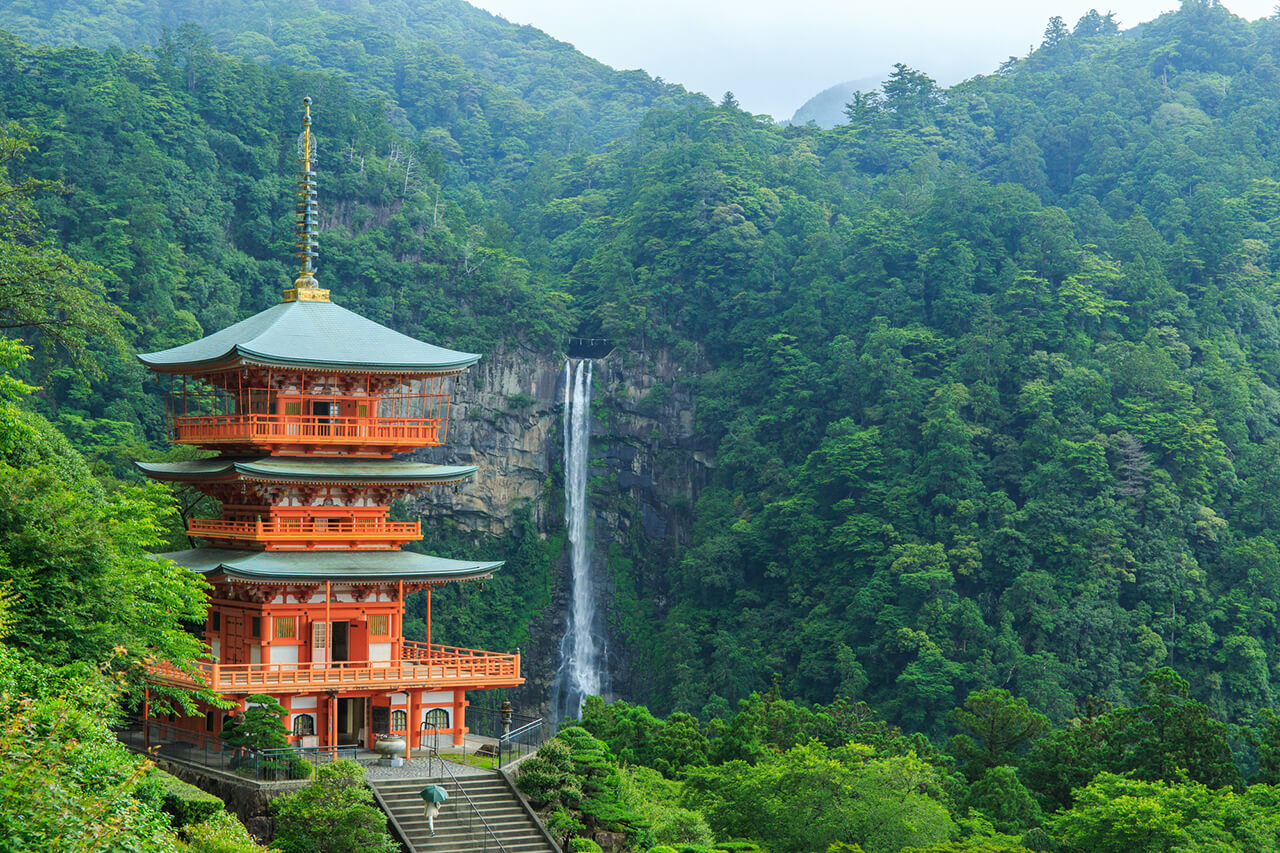
和歌山県那智勝浦町に流れる那智大滝を背景に、朱色に染まる三重塔。これが「熊野那智大社」です。主祭神・熊野夫須美大神(クマノフスミノオホカミ)をはじめ13の神が祀られる大社で、大門坂には樹齢数百年の大樹がそびえたちます。
これらの三山に参詣することを「熊野詣」といい、先人たちは大昔からこの路を歩んできました。男女を問わず、または貴賤や身分の上下を問わず、誰しもが熊野を目指して大勢やってくる様子は、蟻の行進になぞらえて「蟻の熊野詣」と呼ばれていたほど。
2004年には、ユネスコの世界文化遺産にも登録されたこの紀伊山地の霊場と参詣道。心を浄化し、新たな自分へよみがえるため、この地へ訪れてみるのはいかがでしょうか。
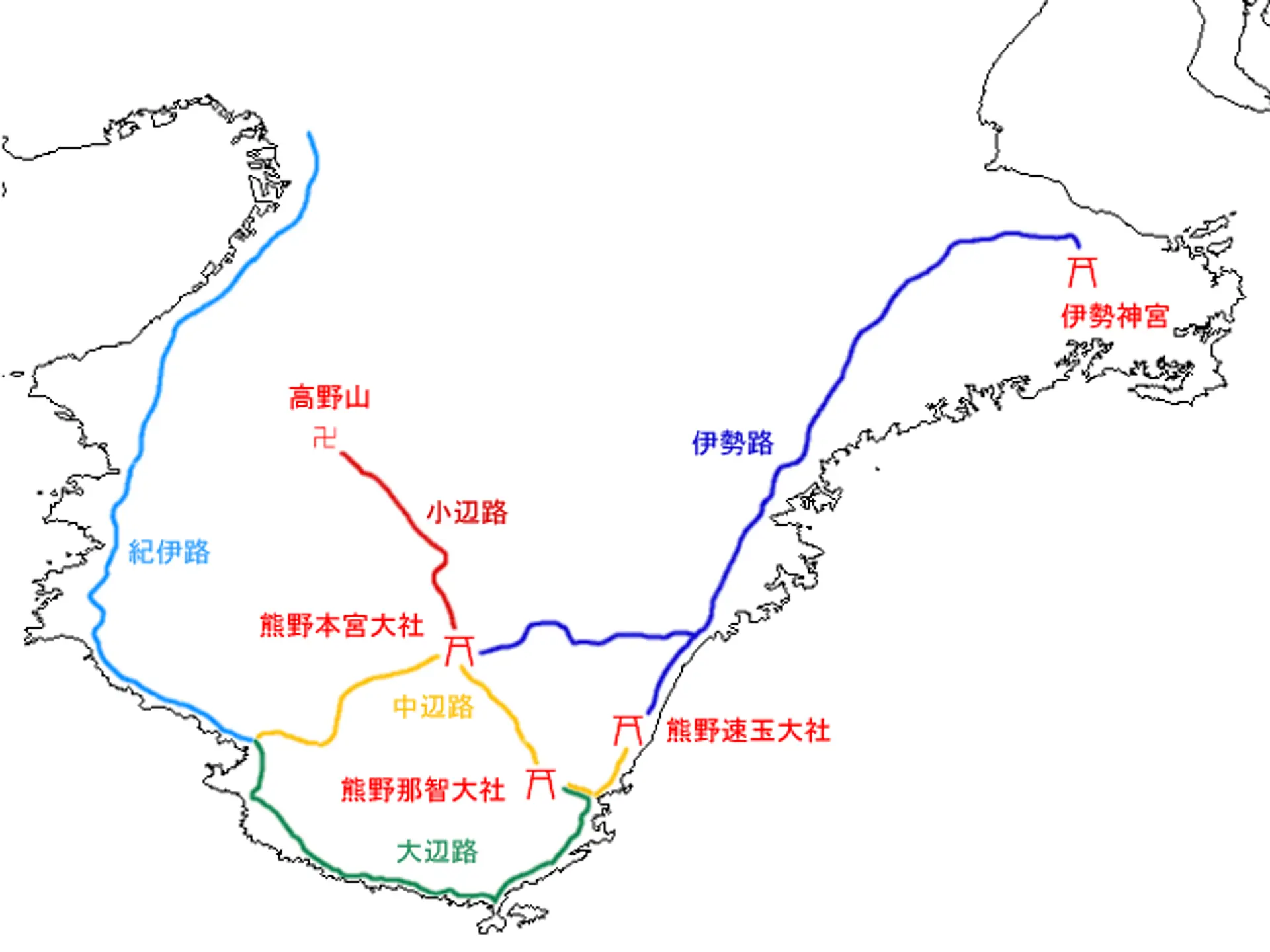
熊野古道へつながる5つのルート
熊野古道には、「中辺路」「伊勢路」「小辺路」「紀伊路」「大辺路」という5つのルートが存在します。それぞれ簡単に説明すると
中辺路(なかへち)
田辺からはじまり、熊野本宮大社へと向かうルート。山中を分け入るこの路は、後鳥羽天皇や藤原定家、和泉式部もこの路を歩んだといわれています。
伊勢路(いせじ)
伊勢神宮からはじまり、熊野三山それぞれの大社へと向かうルート。いくつもの峠道をこえるこの路からは、さまざまな景観や歴史を感じ取ることができます。
小辺路(こへち)
高野山と熊野本宮大社をつなぐ、およそ70kmの参詣道。高野山の奥から山脈を縦断していくため、難易度の高いルートとされています。
紀伊路(きいじ)
京都の城南宮を起点に大阪府堺市や紀伊田辺を経由して熊野三山へと繋がるルート。沿線の各所には由緒ある寺や趣ある建物が並んでいる点が特徴です。
大辺路(おおへち)
和歌山県田辺市を海沿いに南下する那智勝浦町経由のルート。沿線の寺や社だけでなく、海沿いならではの景観を楽しむことができる参詣路となっています。
三重県が世界に誇る文化遺産「熊野古道伊勢路」

かつて江戸時代には、「伊勢に七度(ななたび)、熊野へ三度(さんど)」といわれるほど、伊勢神宮と熊野三山を参詣することは庶民の憧れでした。
「伊勢路」とは、この庶民の憧れである「伊勢神宮」と「熊野三山」をつなぐ参詣路のことを指すのです。
「祈りの道」として古来より文化が浸透してきたこの路は、幾千万もの旅人が歩んだ大切な存在となっており、今や単なる道ではなく、三重県が世界に誇る文化遺産となりました。
伊勢路のおすすめコース
伊勢路には全部で24のコースがあり、今も多くの人に楽しまれていますが、その中でも以下の3つのコースは、初心者でも比較的安心して歩ける人気のコースとなっています。景観や史跡を眺めながら、心と魂を洗う旅の第一歩としておすすめです。
①馬越峠コース(約5km、2時間半程度、難易度★★★)
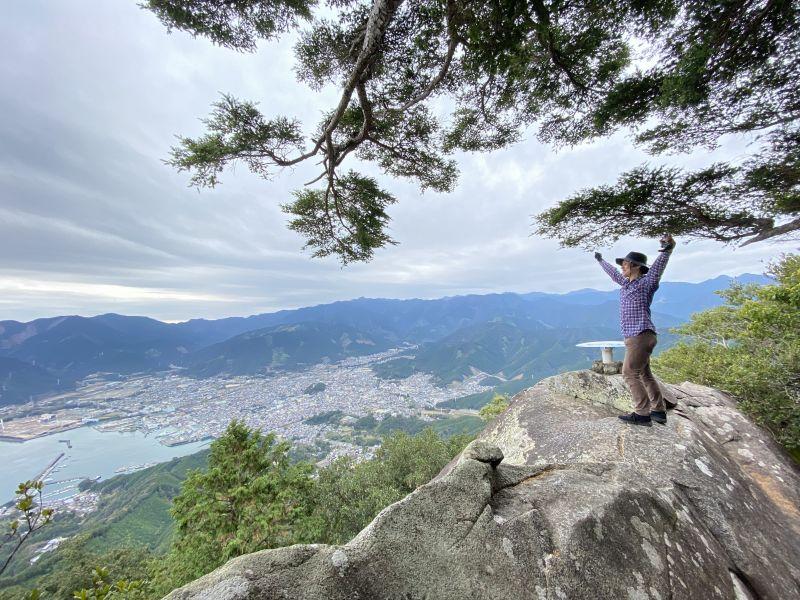
美しい森林のなか、伊勢路でも随一といわれる石畳が見られるコースです。峠の頂上からの眺めが絶景で、峠をくだったところにある馬越公園も桜の名所として有名なため、春になると多くの人々が訪れる人気コースとなっています。
取材レポート:「馬越峠」は熊野古道伊勢路で随一の美しい石畳が有名。馬越峠から続く登山コースには、尾鷲を一望できる絶景スポット天狗倉山も!行き方&楽しみ方をご紹介
②ツヅラト峠コース(約8km、2時間半程度、難易度★)
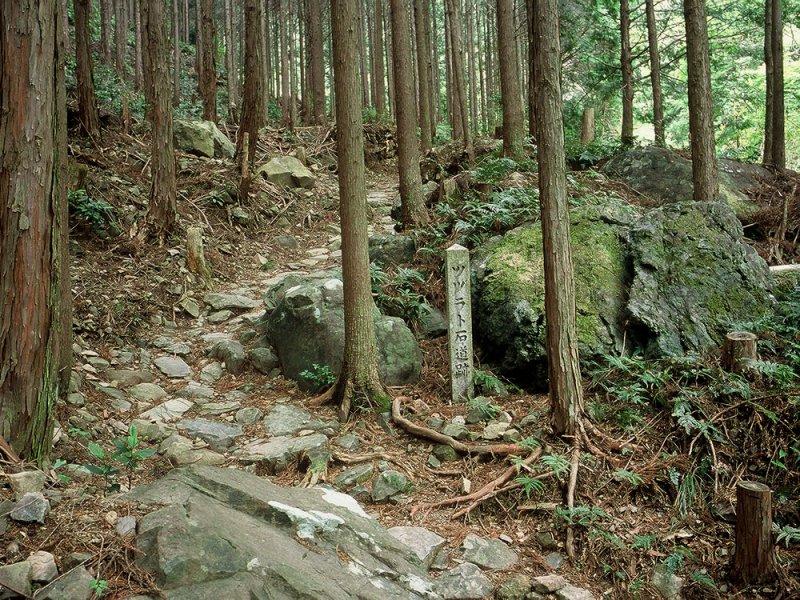
いくつものカーブが連続する峠道が特徴である「ツヅラト峠」。「ツヅラト」とは「九十九折」のことを指し、まさにこの路の特徴があらわされています。今でも石畳や石垣が良い状態で保全されており、沿線には西国三十三所観音石像群も安置されています。
モデルコース:熊野古道伊勢路 ツヅラト峠を歩く
③松本峠コース(約5km、3時間程度、難易度★★)
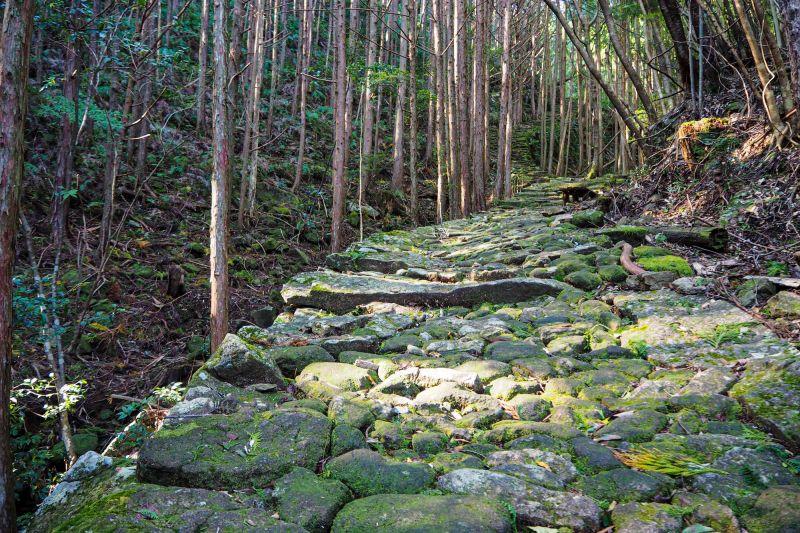
道中のほとんどに石畳で敷かれている松本峠は、比較的距離が短く初心者にも歩きやすい人気のコースです。道中には、建てられたその日に妖怪と間違われて、鉄砲で撃たれてしまったお地蔵様が立っており、今でも往来する人々を見守っています。
取材レポート:熊野古道伊勢路・松本峠や、周辺エリアにある七里御浜、鬼ヶ城などの世界遺産を歩いて見て楽しむ旅!山登り初心者や、お子様連れでも安心して巡れるスポット&楽しみ方をご紹介
熊野古道伊勢路周辺の見どころスポット
熊野古道伊勢路には、たくさんの見どころスポットが存在します。神話にもとづくスピリチュアルなスポットから、美しい景観が視界いっぱいに拡がる絶景スポットまで、その種類は多種多様!
今回は、熊野古道を訪れるなら絶対にはずせない4つのスポットをご紹介!心の浄化と共に、記憶に残る体験をしてはいかがでしょうか。
①花の窟神社(はなのいわやじんじゃ)
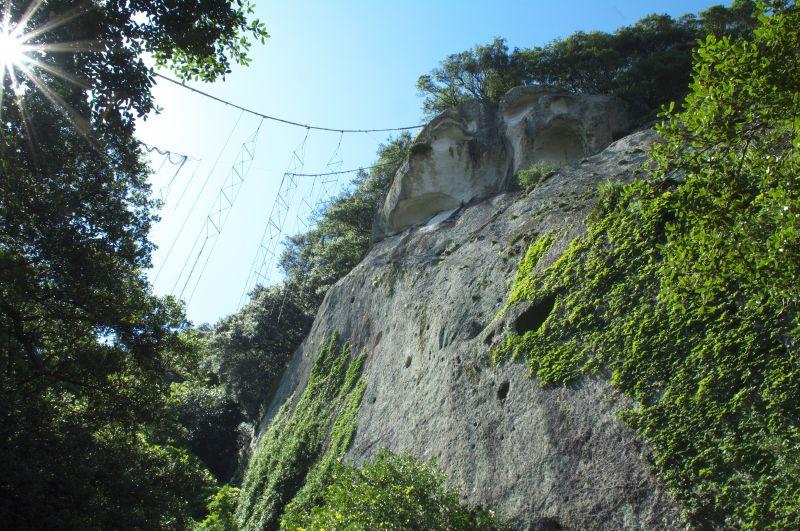
「花の窟神社」は日本書紀で「日本最古の神社」と記されており、伊弉冉尊(イザナミノミコト)が葬られたとされる神社です。
黄泉の国と接する場所として信じられており、よみがえりのパワースポットとして今でも人気があります。境内にはたくさんのご神体が存在しており、神話が眠る場所として全国から多くの人が訪れているスポットです。
取材レポート:花の窟神社で御朱印をもらってきました!日本最古のパワースポット!?
②七里御浜(しちりみはま)

熊野市から紀宝町にかけての全長約22kmにわたる、日本で最も長い砂礫海岸がこの「七里御浜」。「日本の渚百選」にも選ばれた美しい景色は、熊野詣に訪れた人たちから広く愛されていて、春から夏にかけての時期にはアカウミガメも上陸します。
※この写真は、松本峠より撮影をしたものです。
取材レポート:七里御浜沿いを走り、熊野の美味に舌鼓!
③獅子岩(ししいわ)
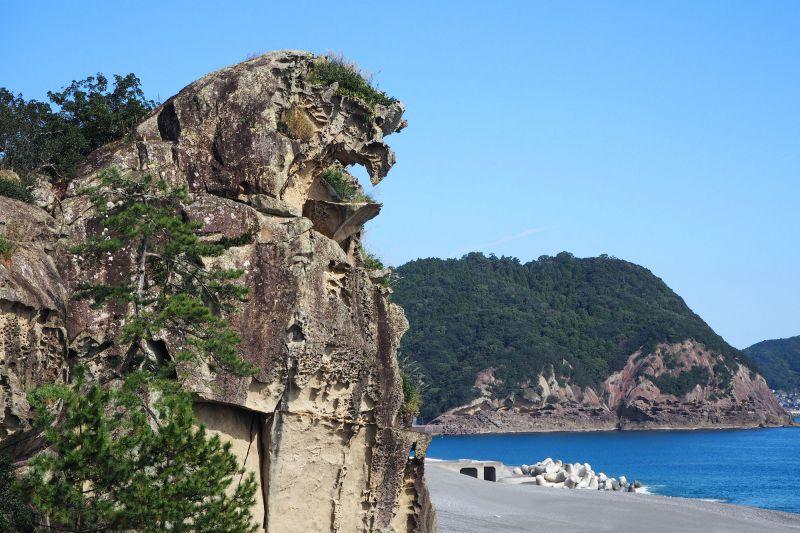
熊野の海岸沿いに現れた、巨大な岩。
岩の形がまるで咆哮する獅子のように見えることから「獅子岩」と呼ばれるようになりました。
高さ25mにもおよぶこの獅子岩は、近くを流れる井戸川の上流にある「大馬神社」の狛犬として位置付けられており、その景観は国の天然記念物にも指定されています。
獅子巖
無料
年中無休
あり
JR紀勢本線「熊野市駅」から徒歩で約10分
熊野尾鷲道路熊野大泊ICから国道42号七里御浜沿い、車で新宮方面へ約3分
④丸山千枚田(まるやませんまいだ)
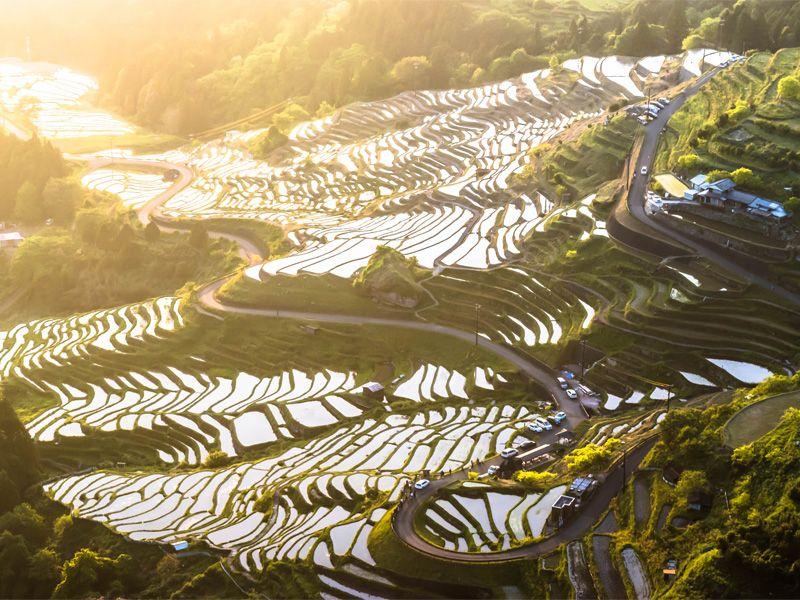
熊野市にある丸山地区には、無数の小さな水田が並んだ地域が存在します。山の斜面を利用して並べられた水田の数は、なんと1340枚。その見た目から「丸山千枚田」と名付けられており、まさに絶景と呼ぶにふさわしい人気スポットです。
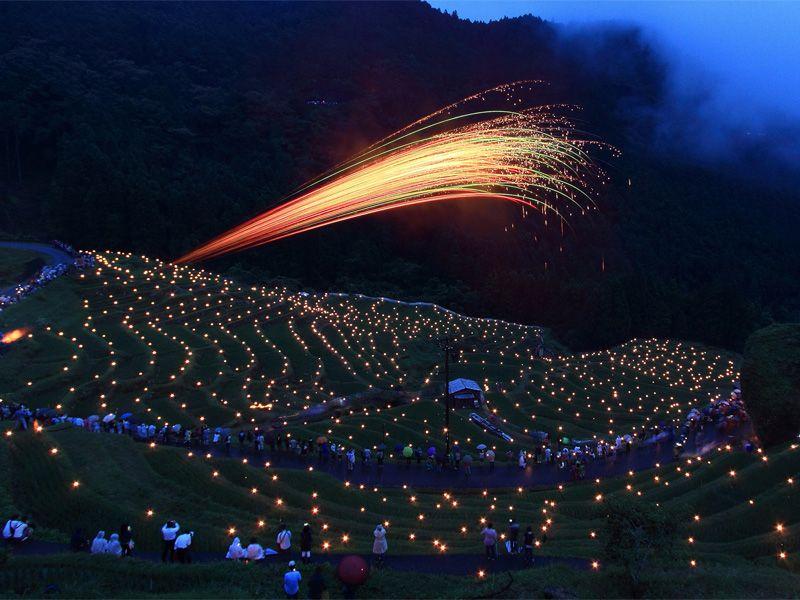
毎年6月には「虫おくり」という農耕行事が行われ、夕刻になると松明の灯りや太鼓の音などで害虫を追い払います。無数の松明が丸山千枚田のなかで輝く景観は、とても幻想的です。
※2023年度の『虫おくり』は未定です。詳細は熊野市の公式サイトでご確認ください。
熊野古道周辺情報
見どころが多い熊野古道。霊験あらたかな場所であるが故、神社やパワースポットに目が向いてしまいがちですが、パワースポット以外にも知ってほしい観光名所はたくさんあります。
また、熊野は温泉の名所でもあるのです。たくさん歩いたあとは、温泉が沁みるほど気持ちよいでしょう。熊野古道にご旅行の際は、一緒に温泉も計画に入れてみてはいかがでしょうか。
熊野は、実は温泉の名所
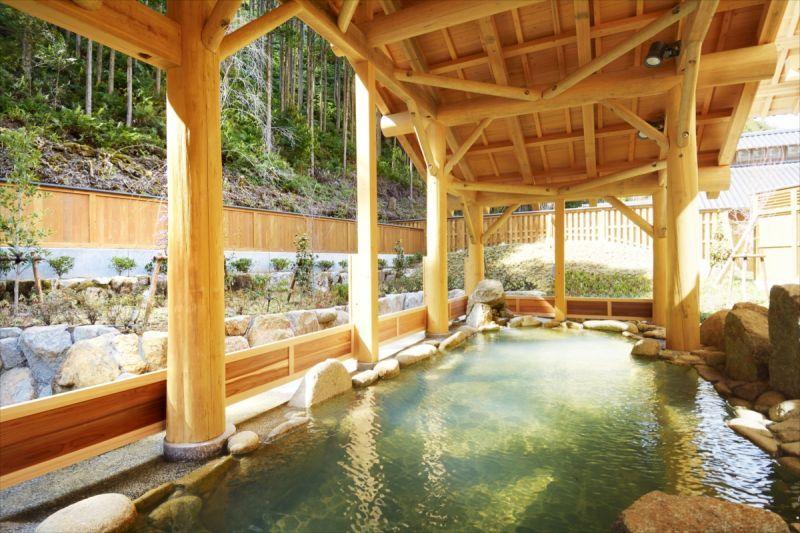
熊野は実は温泉の名所で、伊勢路周辺であれば「熊野倶楽部」や「湯ノ口温泉」が有名です。
その土地ならではの魅力が濃縮された温泉に浸かり、昔の旅人を想像し、その長い歴史に思いを馳せてみるのはいかがでしょうか。
熊野古道を歩いた疲れを体の芯から溶かしだしてくれるだけではなく、その土地が秘めたエネルギーを身体いっぱいに充填してくれるでしょう。
取材レポート:美食オールインクルーシブのリゾート施設「世界遺産リゾート 熊野倶楽部」で贅沢な時間を過ごしませんか?
熊野古道伊勢路のアクセス

熊野古道伊勢路へは、鉄道でのアクセスが便利です。
東京・名古屋方面から向かうのであれば、名古屋駅でJR特急ワイドビュー南紀に乗車して熊野市駅に向かいましょう。名古屋駅から約2時間50分で熊野市駅に到着です。また、ルートやスケジュール次第では、新宮駅まで向かうのも良いでしょう。
「ツヅラト峠道」を散策するなら紀伊長島駅、「馬越峠道」を散策するなら尾鷲駅、「松本峠道」を散策するなら熊野市駅での降車がおすすめです。それぞれ峠によって特徴や見どころが異なるため、あらかじめ登りたい峠を決めておくと良いでしょう。
大阪方面からアクセスする場合は、近鉄特急で松阪駅に下車後、JRワイドビューに乗車して熊野市駅に向かいましょう。
服装・装備
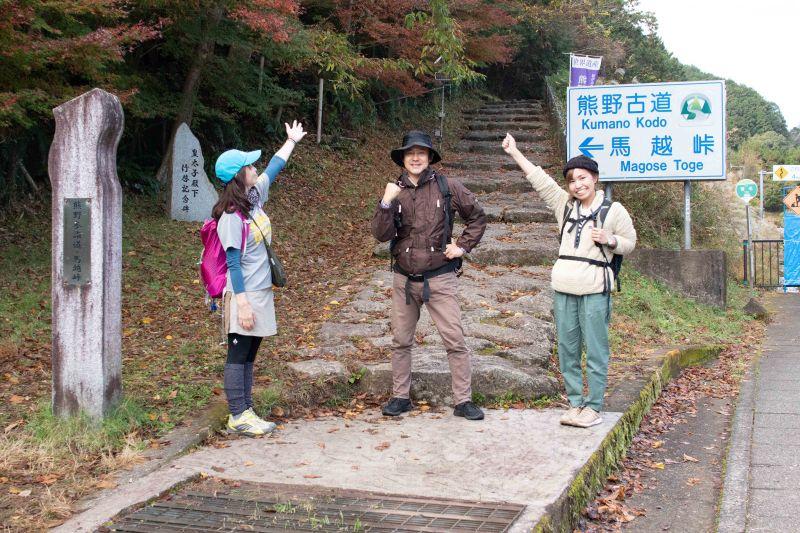
初心者向けの簡単なコースから上級者向けのいくつもの山を超えるコースまで様々ありますが、熊野古道の散策は、基本的には長距離に及ぶので、山歩きと同様の服装や装備を準備するようにしましょう。
帽子やリュックサック、履き慣れたウォーキングシューズやトレッキングシューズ、ウォーキングウェアを用意のうえ、装備としては雨具やタオル、虫除け、携行食、腕時計、手袋なども用意しておくとよいでしょう。
また、現地でゴミをポイ捨てしないようゴミ袋も準備しておくことが望ましいです。加えて、ケガなどの緊急事態に備えて救急用品なども準備しておくことをおすすめします。
軽装で熊野古道を歩いてしまうことは危険です。山の中で石段を登ることもありますし、ときにはムカデなどの害虫に咬まれることも予想されます。安易な格好で険しいルートに入ってしまわないように注意しましょう。
宿泊施設

日本全国から人々が訪れる熊野古道。周辺にはホテルや旅館などの宿泊施設がたくさんあります。単身でのご旅行に最適なシングルのお部屋から、ご家族で気兼ねなく過ごせるコテージまでさまざまなお部屋が揃っているのが特徴です。
飲食店はあまり多くないので、ホテルや旅館では食事つきのプランがおすすめ。現地の名物料理をいただき、翌日のエネルギーを補給しましょう!
周辺の宿泊施設は、下記のリンクから検索ができます。エリアや予算、お部屋のタイプなど、お好みの条件に応じて検索することができますので、熊野古道へのご旅行の際にぜひご利用ください。
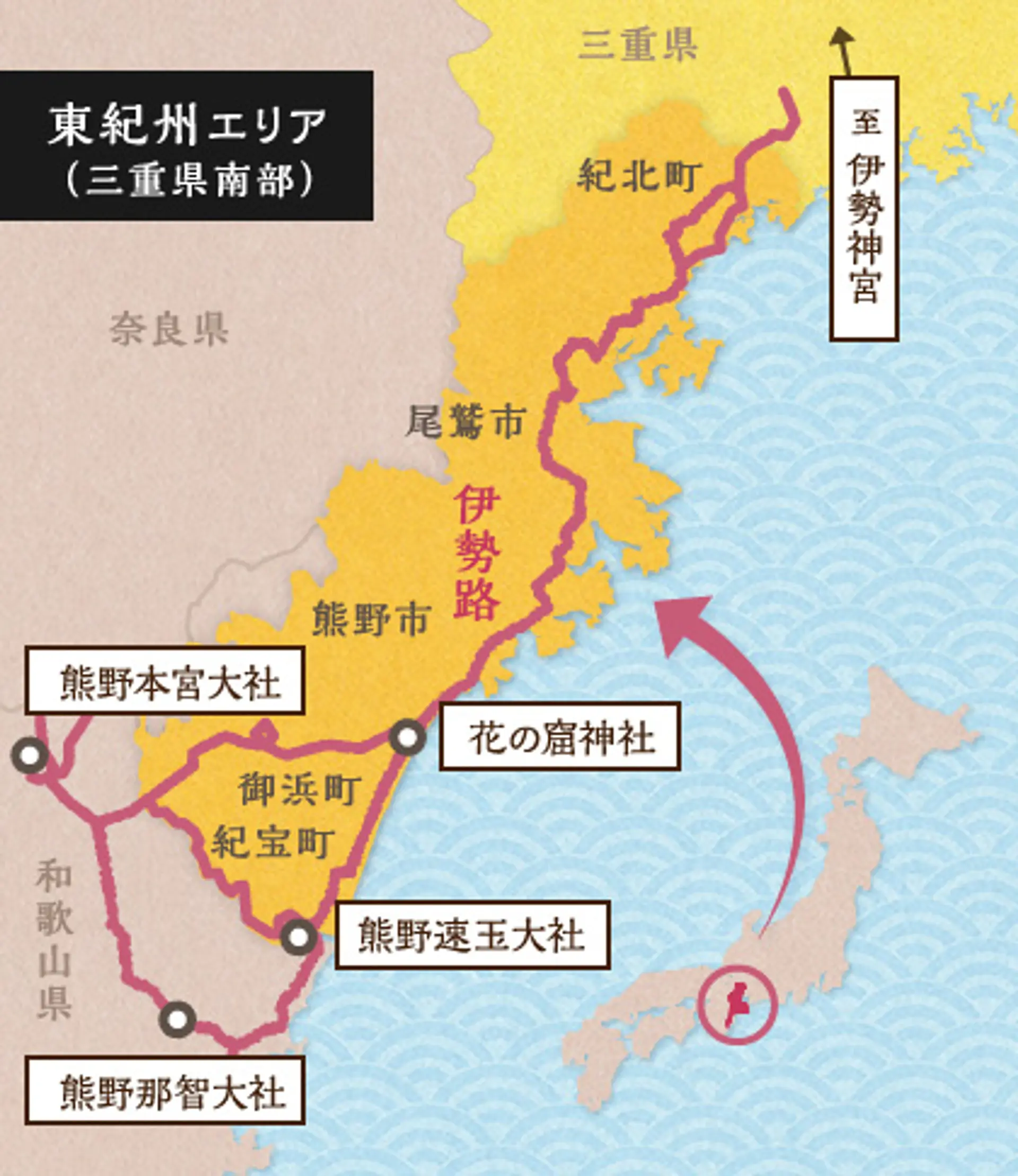
まとめ
熊野古道伊勢路にはさまざまな観光スポットがあり、古道散策以外にも楽しめる場所がたくさんあります。ひとりでのご旅行だけでなく、カップルやご家族、友人との旅行でもお楽しみいただけるエリアです。一生の思い出に残る旅、熊野古道で体験してみてはいかがでしょうか。もしかしたら、思いがけぬ出会いがあなたを待っているかもしれません。
★他にも、熊野の魅力を伝える記事はたくさんあります!
以下で、おすすめの7記事をご紹介しますので、ぜひご覧ください♪
・熊野古道伊勢路で最古の「波田須の道」は歩きやすくて初心者にもぴったり。海が見える秘境駅、絶景スポットなど魅力満載な波田須の行き方&楽しみ方をご紹介
・絶景プロデューサー詩歩さんが熊野古道伊勢路や便石山象の背、グランピング施設など東紀州の絶景に出会う旅!【前編】
・絶景プロデューサー詩歩さんがツエノ峰の「雲海」や「青の洞窟」など東紀州の絶景に出会う旅!【後編】
・今!熊野市がアツイ!!世界に誇る観光スポットの宝庫!熊野特集!!
・魂を揺さぶられる「神々が宿る地」を巡る旅
・澄み切った夜空で繰り広げられる星の瞬き… 「世界遺産のまち」で星空観賞!
・昔と今を繋ぐ道「熊野古道」。歴史と自然あふれる世界遺産のパワーに触れました!


.png)